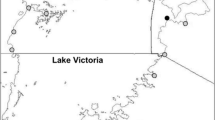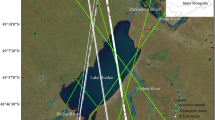Abstract
Apart from the Renaissance Dam and other constructed dams on the River Nile tributaries, Egypt is classified globally as a state of scarce water. Egypt’s water resources are very limited and do not contribute a significant amount to its water share except the River Nile (55.5 billion m3/year). While the number of population increases every year, putting more stress on these limited resources. This study aims to use remote-sensing data to assess the change in surface area and water-level variation in Lake Nasser using remote-sensing data from Landsat-8 and altimetry data. In addition, it investigates the use of thermal data from Landsat-8 to calculate water loss based on evaporation from Lake Nasser. The eight Landsat-8 satellite images were used to study the change in surface area of Lake Nasser representing winter (January) and summer (June/July) seasons in two consecutive years (2015 and 2016). Time series analyses for 10-day temporal resolution water-level data from Jason-2/OSTM and Jason-3 altimetry was carried out to investigate water-level trends over the long term (1993 and 2016) and short term (2015–2016) in correspondence with the change of the surface area. Results indicated a shrink in the lake surface area in 2016 of approximately 14% compared to the 2015 area. In addition, the evaporation rate in the lake is very high causing a loss of approximately 20% of the total water share from the river Nile.







Similar content being viewed by others
References
Abd-El Monsef H, Scot ES, Kamal D (2015) Impacts of the Aswan high dam after 50 years. Water Resour Manag 29:1873–1885
Abutaleb K, Ngie A, Darwish A, Ahmed M, Arafat S, Ahmed F (2015) Assessment of urban heat island using remotely sensed imagery over Greater Cairo, Egypt. Adv Remote Sens 4(4):35–47
Alsdorf DE, Rodriguez E, Lettenmaier DP (2007) Measuring surface water from space. Rev Geophys 45:1–24
Arsano Y, Tamrat I (2005) Ethiopia and the Eastern Nile Basin. Aquat Sci 67:15–27
Awange JL, Forootan E, Kuhnm M, Kusche J, Heck B (2014) Water storage changes and climate variability within the Nile Basin between 2002 and 2011. Adv Water Res 73:1–15
Barsi JA, Lee K, Kvaran G, Markham BL, Pedelty JA (2014) The spectral response of the Landsat-8 operational land imager. Remote Sens 6:10232–10251
Bastawesy MA, Khalaf FI, Arafat SM (2008) The use of remote sensing and GIS for the estimation of water loss from Tushka lakes, southwestern desert, Egypt. J Afr Earth Sci 52(3):73–80
Calmant S, Seyler F, Cretaux JF (2008) Monitoring continental surface waters by satellite altimetry. Surv Geophys 29:247–269
CAPMAS (2018a) Egypt in figures-labor: central agency for public mobilization and statistics. CAPMAS, Cairo
CAPMAS (2018b) Egypt in figures-economy: central agency for public mobilization and statistics. CAPMAS, Cairo
Cretaux JF, Birkett C (2006) Lake studies from satellite radar altimetry. Comp Rend Geosci 338:1098–1112
Duan Z, Bastiaanssen WG (2013) Estimating water volume variations in lakes and reservoirs from four operational satellite altimetry databases and satellite imagery data. Remote Sens Environ 134:403–416
El-Gammal EA, Salem SM, El-Gammal AA (2010) Change detection studies on the world’s biggest artificial lake (Lake Nasser, Egypt). Egyptian J Remote Sens Space Sci 13:89–99
ElKobtan H, Salem M, Attia K, Ahmed S, Abou-Elmagd I (2016) Sedimentological study of Lake Nasser; Egypt, using integrated improved techniques of core sampling, X-ray diffraction and GIS platform. Cogent Geosci 2:1168069
El-Shirbeny MA, Aboelghar MA, Arafat SM, El-Gindy AGM (2014a) Assessment of the mutual impact between climate and vegetation cover using NOAA-AVHRR and Landsat data in Egypt. Arab J Geosci 7(4):1287–1296
El-Shirbeny MA, Abutaleb KA, Saleh NH, Ali AM (2014b) Water monitoring in Lake Nasser using satellite data. Second New Nile scientific conference, Addis Ababa, Ethiopia. 12/2014. https://doi.org/10.13140/rg.2.1.2048.6241
FAO-Aquastat (2015) Food and agriculture organization of the United Nations. Retrieved from FAO-Aquastat. Country Profile: Egypt. http://www.fao.org/nr/water/aquastat/countries_regions/EGY/index.stm
Gerlak A, Lautze J, Giordano M (2011) Water resources data and information exchange in transboundary water treaties. Int Environ Agreem Polit Law Econ 11:179–199
Hirsch R, Slack J, Smith R (1982) Techniques of trend analysis for monthly water quality data. Water Resour Res 18:107–121
Kamel AF, Elsirafe AM (1993) Delineation and analysis of the surface and subsurface structural lineament patterns in the North Lake Nasser area and its surroundings, Aswan, Upper Egypt. Int J Remote Sens 15(7):1471–1493
Kottek M, Grieser J, Beck C, Rudolf B, Rubel F (2006) World map of the Köppen–Geiger climate classification updated. Meteorol Z 15(3):259–263
Kriegler FJ, Malila WA, Nalepka RF, Richardson W (1969) Preprocessing transformations and their effects on multispectral recognition. In: Proceedings of the sixth international symposium on remote sensing of environment, University of Michigan, Ann Arbor, MI, pp 97–131
Leon JG, Calmant S, Seyler F, Bonne M, Cauhope M, Frappart F, Filizola N, Fraizy P (2006) Rating curves and estimation of average water depth at the upper Negro River based on satellite altimeter data and modeled discharges. J Hydrol 328:481–496
Linacre ET (1977) A simple formula for estimating evaporation rates in various climates, using temperature DATA alone. Agric Meteorol 18:409–424
McFeeters SK (1996) The use of the Normalized Difference Water Index (NDWI) in the delineation of open water features. Int J Remote Sens 17:1425–1432
McSweeney C, New M, Lizcano G, Lu X (2010) The UNDP climate change country profiles improving the accessibility of observed and projected climate information for studies of climate change in developing countries. Bull Am Meteorol Soc 91:157–166
Medina C, Gomez-Enri J, Alonso JJ, Villares P (2010) Water volume variations in Lake Izabal (Guatemala) from in situ measurements and ENVISAT Radar Altimeter (RA-2) and Advanced Synthetic Aperture Radar (ASAR) data products. J Hydrol 382:34–48
Misra A, Balaji R (2015) Decadal changes in the land use/land cover and shoreline along the coastal districts of southern Gujarat, India. Environ Monit Assess. https://doi.org/10.1007/s10661-015-4684-2
Misra A, Murali RM, Vethamony P (2013) Assessment of the land use/land cover (LU/LC) and mangrove changes along the Mandovi–Zuari estuarine complex of Goa, India. Arab J Geosci 8(1):267–279
Muala E, Mohamed YA, Duan Z, Zaag P (2014) Estimation of reservoir discharges from Lake Nasser and Roseires Reservoir in the Nile Basin using satellite altimetry and imagery data. Remote Sens 6(8):7522–7545
Rouse JW, Haas RH, Schell JA, Deering DW (1974) Monitoring vegetation systems in the great plains with ERTS. In: Freden SC, Mercanti EP, Becker MA (eds) Third Earth Resources Technology Satellite-1 Symposium-Volume I: Technical Presentations. NASA, Washington, D.C., pp 309–317
Sundarakumar K, Harika M, Aspiya S, Yamini S (2012) Land use and land cover change detection and urban sprawl analysis of Vijayawada city using multitemporal landsat data. Int J Eng Sci Technol 4:170–178
Swenson S, Wahr J (2009) Monitoring the water balance of Lake Victoria, East Africa, from space. J Hydrol 370:163–176
Zhang R, Zhu D (2011) Study of land cover classification based on knowledge rules using high-resolution remote sensing images. Int J Remote Sens 38(4):3647–3652
Zhang JQ, Xu KQ, Yang YH, Qi LH, Hayashi S, Watanabe M (2006) Measuring water storage fluctuations in Lake Dongting, China, by Topex/Poseidon satellite altimetry. Environ Monit Assess 115:23–37
Author information
Authors and Affiliations
Corresponding author
Rights and permissions
About this article
Cite this article
El-Shirbeny, M.A., Abutaleb, K.A. Monitoring of Water-Level Fluctuation of Lake Nasser Using Altimetry Satellite Data. Earth Syst Environ 2, 367–375 (2018). https://doi.org/10.1007/s41748-018-0053-y
Received:
Accepted:
Published:
Issue Date:
DOI: https://doi.org/10.1007/s41748-018-0053-y




